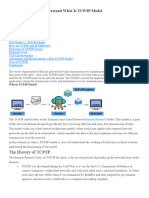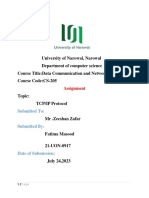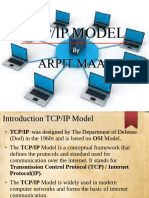0% found this document useful (0 votes)
10 views2 pagesTCP - IP Notes by RK
TCP/IP notes by rk
Uploaded by
dipmalagupta369Copyright
© © All Rights Reserved
We take content rights seriously. If you suspect this is your content, claim it here.
Available Formats
Download as PDF, TXT or read online on Scribd
0% found this document useful (0 votes)
10 views2 pagesTCP - IP Notes by RK
TCP/IP notes by rk
Uploaded by
dipmalagupta369Copyright
© © All Rights Reserved
We take content rights seriously. If you suspect this is your content, claim it here.
Available Formats
Download as PDF, TXT or read online on Scribd
/ 2






























































